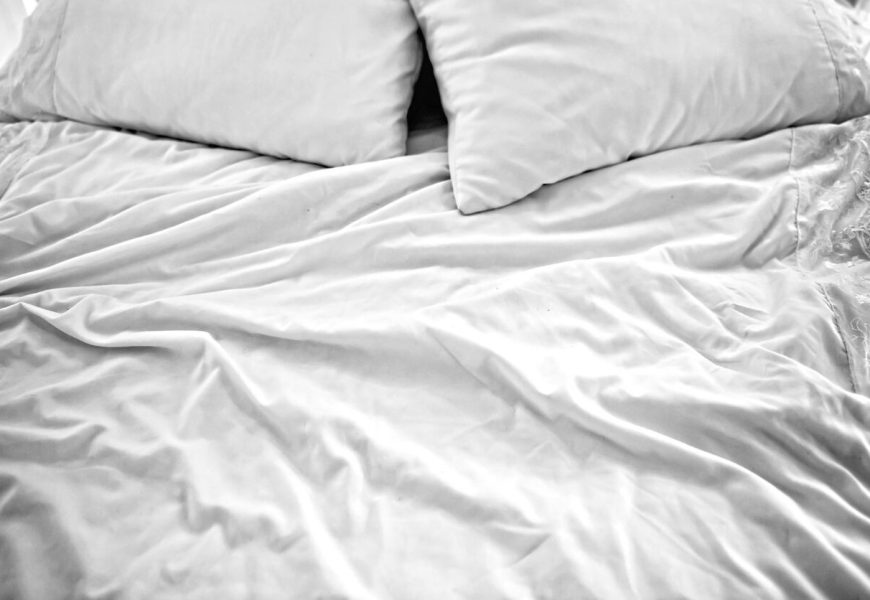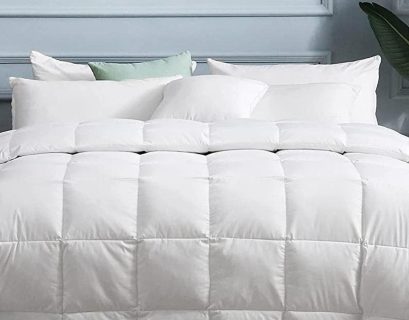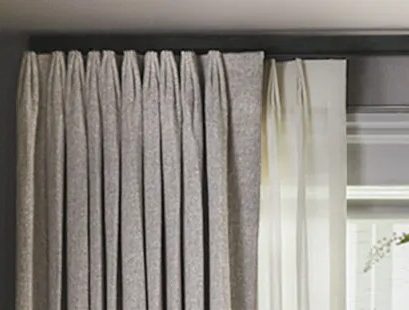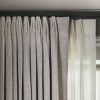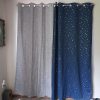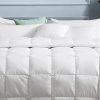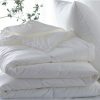There’s nothing quite like the feeling of slipping into a bed adorned with freshly laundered sheets. However, the frustration of finding your sheets wrinkled after washing is a common woe for many. In this guide, we will explore effective strategies to prevent sheets from wrinkling, ensuring that your bed remains a haven of comfort and aesthetic appeal. From washing and drying techniques to storage considerations, let’s unravel the secrets to achieving smooth, wrinkle-free sheets.
Understanding the Causes of Wrinkles:
Before delving into prevention methods, it’s essential to understand why sheets wrinkle in the first place. Several factors contribute to this phenomenon:
- Fabric Type:
- Different fabrics react differently to washing and drying. Natural fibers like cotton and linen are more prone to wrinkling, while synthetic fabrics like microfiber tend to be more wrinkle-resistant.
- Washing Conditions:
- Aggressive washing cycles, high water temperatures, and overloading the washing machine can lead to increased wrinkling. Gentle care during washing is crucial.
- Drying Process:
- Over-drying sheets or using high heat in the dryer can cause fibers to lose moisture and become more susceptible to wrinkles.
- Storage:
- How sheets are folded and stored post-washing can impact their wrinkle resistance. Improper folding and storage may result in creases that are challenging to smooth out.
Washing Tips for Wrinkle Prevention:
- Separate Bedding Items:
- Washing sheets separately from heavier items like blankets or towels reduces friction and prevents excessive wrinkling.
- Use a Gentle Cycle:
- Opt for a gentle or delicate washing cycle to minimize the stress on fabric fibers. This is especially important for sheets made from delicate materials like linen.
- Cold or Warm Water:
- Wash sheets in cold or warm water rather than hot water. Hot water can weaken fibers and contribute to increased wrinkling.
- Mild Detergents:
- Choose a mild, liquid detergent to avoid harsh chemicals that might damage fabric fibers. Less abrasive detergents are gentler on your sheets.
- Avoid Overloading:
- Overloading the washing machine can lead to insufficient water circulation, resulting in uneven washing and more wrinkles. Follow the manufacturer’s recommendations for load capacity.
Drying Techniques for Wrinkle Prevention:
- Low Heat Setting:
- Dry sheets on a low heat setting to prevent over-drying, which can make fibers brittle and more prone to wrinkles.
- Use Dryer Balls:
- Tossing dryer balls into the dryer helps create separation between sheets, allowing air to circulate more freely and reducing the likelihood of wrinkles.
- Remove Promptly:
- Remove sheets from the dryer promptly once the drying cycle is complete. Letting sheets sit in a stationary, hot dryer can contribute to creasing.
- Line Drying:
- Air-drying sheets on a clothesline is an excellent natural alternative. The weight of the sheets can help smooth out wrinkles, and exposure to fresh air imparts a pleasant scent.
- Shake Out Before Drying:
- Before placing sheets in the dryer, give them a good shake to help minimize wrinkles. This simple step can make a significant difference.
Folding and Storage Tips:
- Fold Immediately:
- Fold sheets promptly after drying to prevent wrinkles from setting in. The longer sheets remain in a crumpled state, the more challenging it becomes to smooth out wrinkles.
- Store in a Cool, Dry Place:
- Choose a cool and dry storage location for your sheets. Avoid areas prone to humidity, as dampness can exacerbate wrinkling.
- Use Fabric Softeners:
- Fabric softeners can help keep fibers smooth and soft, reducing the likelihood of wrinkles. Be mindful of the recommended amounts, as excessive use may lead to a sticky residue.
- Store Sheets Separately:
- If possible, store sheets separately from other bedding items. This minimizes friction and prevents the transfer of wrinkles from one item to another.
- Consider Alternative Folding Techniques:
- Experiment with alternative folding techniques, such as rolling or using specialty folding boards. Some methods may be more effective in minimizing wrinkles.
Wrinkle-Resistant Sheet Options:
- Microfiber Sheets:
- Microfiber is a synthetic material known for its wrinkle-resistant properties. Consider investing in microfiber sheets for a smoother, low-maintenance bedding option.
- High-Thread-Count Cotton:
- Sheets with a higher thread count often have a tighter weave, making them less prone to wrinkles. Opt for high-thread-count cotton sheets for both luxury and wrinkle resistance.
- Cotton-Polyester Blends:
- Blends of cotton and polyester can combine the natural feel of cotton with the wrinkle resistance of polyester. Look for sheets with a balanced ratio of these materials.
- Sateen Weave:
- Sateen weave creates a smooth and silky surface, reducing the likelihood of wrinkles. Sheets with a sateen weave offer a luxurious feel while minimizing creases.
- Linen-Cotton Blends:
- While linen is prone to wrinkles, blends with cotton can provide a compromise between the natural texture of linen and the wrinkle resistance of cotton.
Additional Tips for Wrinkle-Free Sheets:
- Invest in Quality Sheets:
- Quality sheets made from durable materials are more likely to withstand washing and drying without excessive wrinkling.
- Ironing or Steaming:
- For a polished look, consider ironing or steaming sheets after washing. This method is effective but may not be practical for daily use.
- Regular Sheet Rotation:
- Rotate sheets regularly to ensure that all sets are in use and experience consistent washing. This prevents some sheets from staying in storage for extended periods and developing more pronounced wrinkles.
- Adjust Washing and Drying Methods:
- Tailor your washing and drying methods based on the specific care instructions provided by the manufacturer. Different fabrics may require unique approaches to minimize wrinkles.
- Bed-Making Techniques:
- Adopt bed-making techniques that involve minimal tugging and pulling. Smooth out sheets gently during the bed-making process to avoid introducing additional wrinkles.
Conclusion:
Achieving wrinkle-free sheets is a combination of smart laundering practices, careful drying techniques, and thoughtful storage. By understanding the factors that contribute to wrinkling and implementing the tips outlined in this guide, you can transform your bedtime routine into a seamless experience of slipping into smooth, luxuriously comfortable sheets.
Experiment with different methods to find the combination that works best for your sheets and fits seamlessly into your lifestyle. With a bit of care and attention, you can enjoy the delight of crisp, wrinkle-free sheets every time you retreat to your haven of rest.
